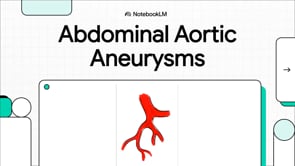O renomado especialista em radioterapia oncológica e tratamento do câncer por hipertermia, Dr. Stephan Bodis, MD, explica como a combinação de hipertermia com terapia de prótons aumenta a eficácia do tratamento e reduz a toxicidade. Essa abordagem inovadora demonstra potencial para sarcomas pélvicos, sarcomas de extremidades e tumores cerebrais pediátricos, com 40 ensaios clínicos apoiando o papel da hipertermia como radiosensibilizadora na terapia oncológica.
Hipertermia e Terapia com Feixe de Prótons: Opções Avançadas de Tratamento do Câncer
Navegar para a Seção
- Hipertermia como Radiosensibilizador no Tratamento do Câncer
- Preservação de Órgãos por meio da Terapia com Hipertermia
- Aplicações Pediátricas da Hipertermia e Terapia com Prótons
- Evidências Clínicas que Apoiam a Hipertermia em Oncologia
- Indicações Específicas por Tipo de Tumor para Terapia Combinada
- Otimização do Tratamento do Câncer com Hipertermia
- Transcrição Completa
Hipertermia como Radiosensibilizador no Tratamento do Câncer
O Dr. Stephan Bodis destaca o papel crucial da hipertermia como radiosensibilizador na terapia oncológica. Em casos de recidiva do câncer após radioterapia prévia, a hipertermia permite o retratamento com doses reduzidas de radiação, mantendo a eficácia. Essa abordagem também se aplica a esquemas de quimioterapia, nos quais a hipertermia viabiliza a redução da dose sem comprometer os resultados.
O mecanismo envolve tornar as células tumorais mais vulneráveis aos danos da radiação. O Dr. Bodis observa que essa combinação é especialmente valiosa quando as opções de tratamento padrão já foram esgotadas, oferecendo nova esperança para casos de câncer recorrente.
Preservação de Órgãos por meio da Terapia com Hipertermia
A preservação de órgãos é uma grande vantagem do tratamento do câncer potencializado pela hipertermia. O Dr. Bodis enfatiza a importância da colaboração com cirurgiões oncologistas para implementar essa abordagem. Em situações em que uma cirurgia mutiladora seria necessária, a hipertermia combinada com radioterapia pode alcançar resultados comparáveis, preservando a função do órgão.
"Não há como preservar um órgão se ele não for funcional após a terapia contra o câncer", explica o Dr. Bodis. Esse princípio orienta as decisões de tratamento em reuniões de comitê de tumores, onde equipes multidisciplinares avaliam a melhor estratégia para cada paciente.
Aplicações Pediátricas da Hipertermia e Terapia com Prótons
O Dr. Bodis identifica a oncologia pediátrica como uma área especialmente promissora para combinações de hipertermia e terapia com feixe de prótons. A terapia com prótons já é padrão para tumores cerebrais infantis na Suíça, e a adição de hipertermia pode reduzir ainda mais as preocupações com toxicidade em longo prazo.
A combinação imita biologicamente a terapia com íons de carbono, mais cara, a um custo menor. A equipe do Dr. Bodis investiga ativamente essa abordagem por meio de ensaios clínicos, focando inicialmente em sarcomas de tecidos moles inoperáveis em adultos antes de expandir para casos pediátricos.
Evidências Clínicas que Apoiam a Hipertermia em Oncologia
Pesquisas substanciais respaldam o papel da hipertermia no tratamento do câncer. O Dr. Bodis cita 40 ensaios clínicos publicados envolvendo 4.000 pacientes, com análise matricial mostrando evidências de boa qualidade para a maioria dos tumores sólidos. Esses estudos demonstram a eficácia da hipertermia quando combinada com radioterapia e quimioterapia.
O Dr. Bodis defende uma discussão mais ampla sobre a hipertermia nos principais centros de tratamento de tumores, observando seu potencial para melhorar os desfechos em múltiplos tipos de câncer, reduzindo a toxicidade do tratamento.
Indicações Específicas por Tipo de Tumor para Terapia Combinada
As evidências atuais apontam para cânceres específicos que mais se beneficiam das combinações de hipertermia e terapia com feixe de prótons. O Dr. Bodis identifica sarcomas pélvicos e sarcomas de extremidades como candidatos principais, especialmente quando a amputação poderia ser necessária.
Para tumores cerebrais pediátricos, a terapia com prótons permanece padrão, exigindo consideração cuidadosa para a adição de hipertermia. O Dr. Bodis alerta contra a expansão de indicações além dos protocolos estabelecidos sem justificativa clínica clara.
Otimização do Tratamento do Câncer com Hipertermia
A hipertermia potencializa a terapia com feixe de prótons, permitindo doses de radiação mais altas e direcionadas com melhor conformidade. O Dr. Bodis explica que essa abordagem mantém a eficácia do tratamento enquanto minimiza os danos ao tecido saudável circundante.
A combinação representa a medicina de precisão em ação, oferecendo planos de tratamento personalizados que maximizam os resultados e preservam a qualidade de vida. O Dr. Bodis enfatiza a importância de segundas opiniões para garantir que os pacientes recebam terapias combinadas otimizadas, adaptadas ao tipo e estágio específicos de seu câncer.
Transcrição Completa
Dr. Stephan Bodis: A hipertermia é uma adição eficaz aos protocolos de tratamento do câncer. Ela atua como radiosensibilizador e reduz a toxicidade do tratamento. Pode ser combinada com terapia com feixe de prótons para sarcomas pélvicos, sarcomas de extremidades e tumores cerebrais pediátricos.
Existem 40 ensaios clínicos publicados sobre hipertermia no tratamento do câncer. A hipertermia fornece radiosensibilização à radioterapia e permite a preservação de órgãos. Sua combinação com radioterapia pode aumentar a eficácia do tratamento oncológico. A terapia com feixe de prótons é o padrão para crianças com tumores cerebrais, e a hipertermia pode potencializar essa abordagem.
Dr. Anton Titov: Estamos discutindo a hipertermia—como ela ajuda a sensibilizar tumores para a radioterapia?
Dr. Stephan Bodis: Há três aplicações principais da hipertermia na radiosensibilização. Primeiro, quando um paciente tem recidiva do câncer e a radioterapia permanece a melhor opção, a hipertermia pode ser combinada com ela. Isso pode permitir doses reduzidas de radiação ou quimioterapia, mantendo a eficácia.
A segunda aplicação é a preservação de órgãos. Nas discussões do comitê de tumores, questionamos os cirurgiões quando uma cirurgia mutiladora é proposta. A hipertermia combinada com radioterapia pode aumentar a eficácia do tratamento enquanto preserva a função do órgão.
O terceiro papel envolve a oncologia pediátrica, onde a toxicidade em longo prazo da radiação é uma grande preocupação. Combinar hipertermia com terapia com feixe de prótons pode imitar a terapia com íons de carbono a um custo menor. Atualmente, conduzimos o primeiro ensaio clínico combinando terapia com feixe de prótons e hipertermia para sarcomas de tecidos moles inoperáveis em adultos.
Nossa revisão de 40 ensaios clínicos envolvendo 4.000 pacientes mostra dados de boa qualidade que apoiam a hipertermia para a maioria dos tumores sólidos. Essa abordagem de tratamento merece mais discussão nos principais centros de câncer.
Dr. Anton Titov: Obrigado. Quais tumores se beneficiariam mais da hipertermia combinada com terapia com feixe de prótons?
Dr. Stephan Bodis: Ainda não sabemos definitivamente, mas focamos nas indicações estabelecidas. A hipertermia pode potencializar o tratamento de sarcomas pélvicos e de extremidades, onde a terapia com prótons já é utilizada, possivelmente permitindo doses mais altas ou melhor conformidade. Para tumores cerebrais pediátricos—onde a terapia com prótons é padrão na Suíça—o papel da hipertermia precisa de discussão cuidadosa com especialistas.






